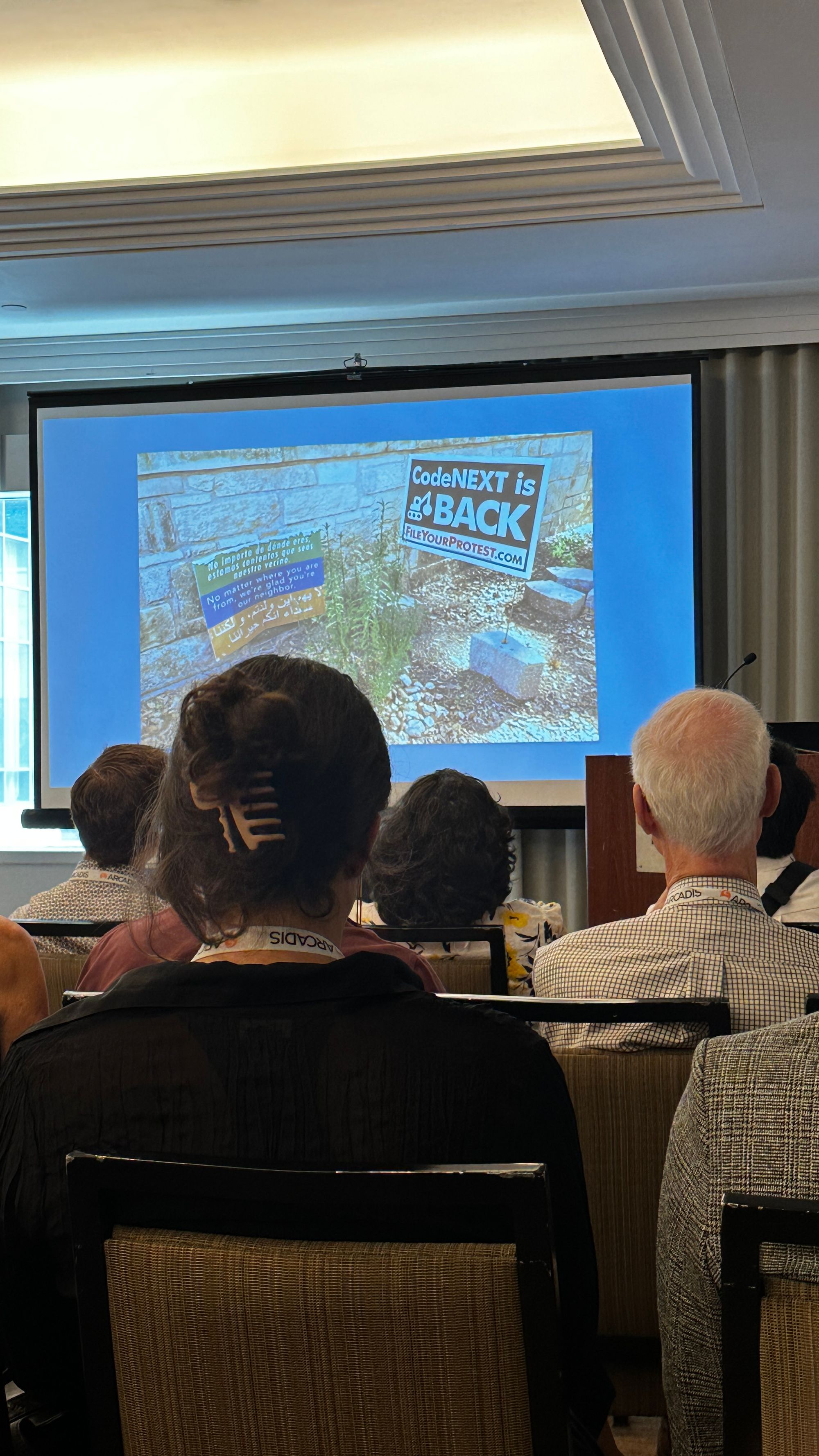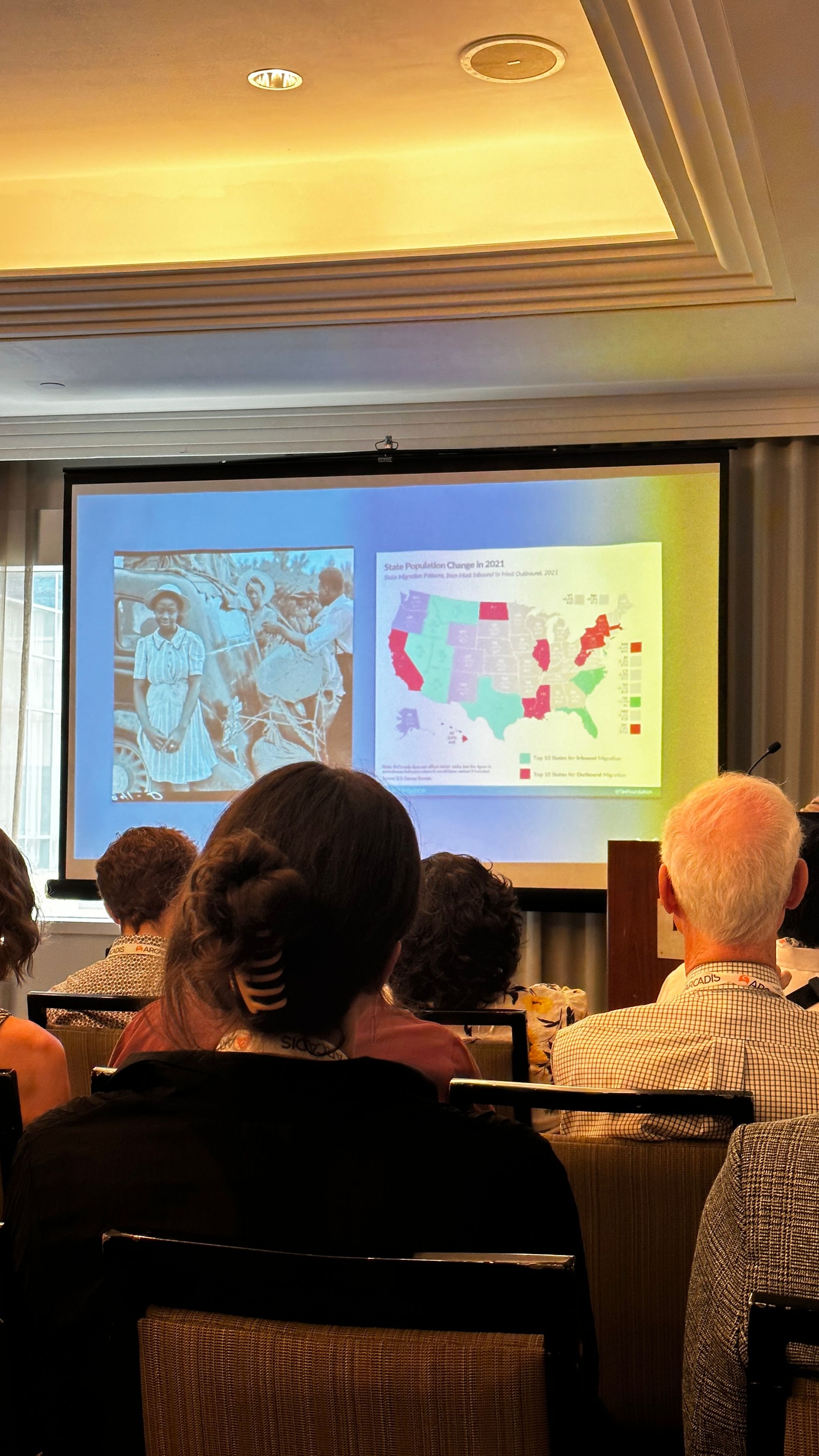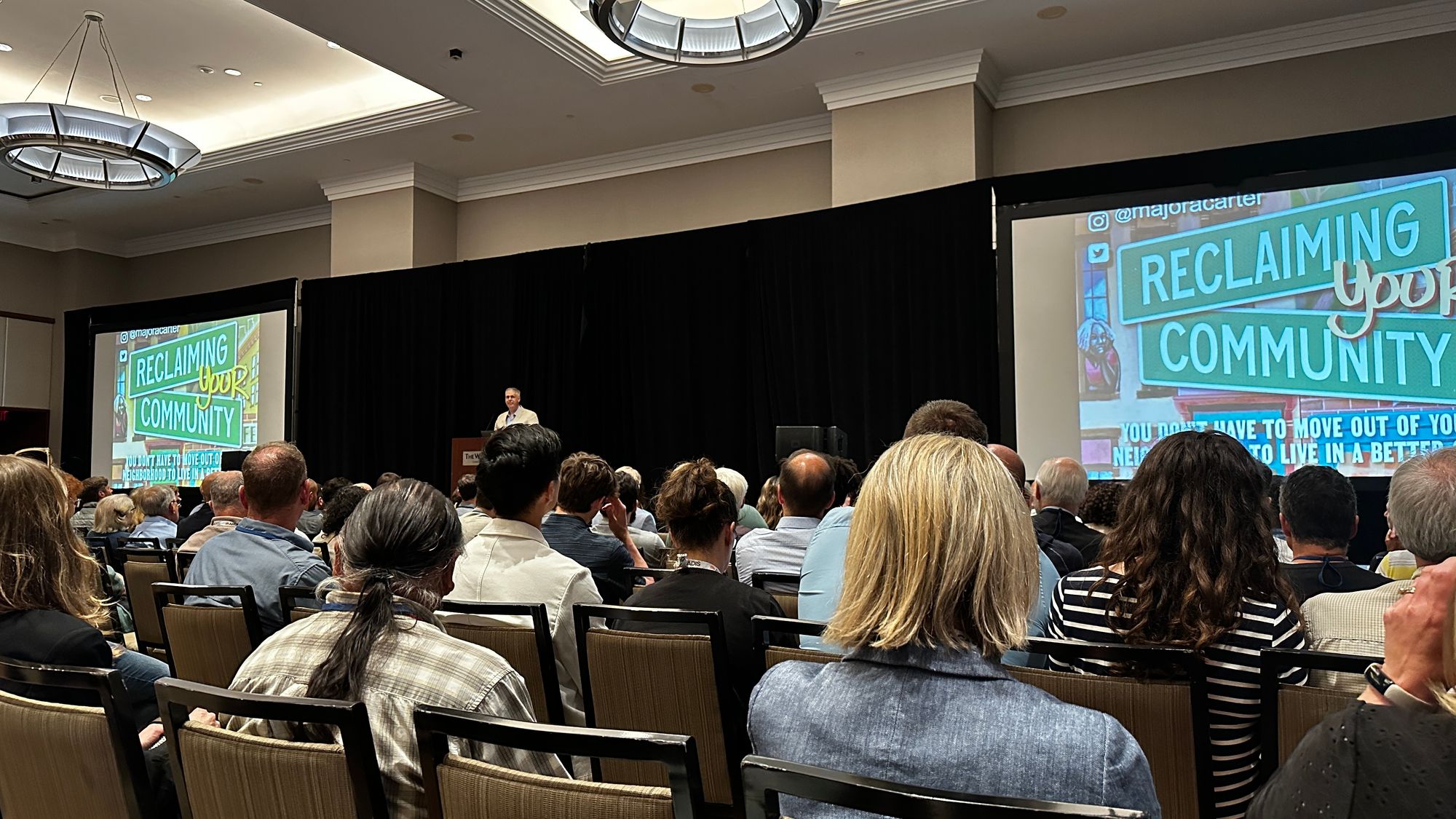Buddy Ruski Learns How To Build Strong Towns
What does it take to create the city of the future?

Communities are built on culture. Every city has its own culture that is represented by a number of factors: the arts, business, food, education, health and wellness. People in the community are the driving force behind those factors, but the built environment often creates the conditions for a community’s values to thrive or suffer.
Durham City Manager Wanda Page said in her recent budget presentation that“budgets are where a city can show what it values.” If health and wellness are a stated value, but your city has few parks that aren’t well-lit and don’t have working water fountains, health and wellness is aspirational at best. Citizens have the ability to change these conditions, but they require resources and collective buy-in. Community members can then build a city that empowers them to live out their values, not one that stands in opposition.
At the end of May, I attended the Strong Towns National Gathering in Charlotte. The two-day conference brought together hundreds of community development and urban planning enthusiasts to share their stories and expertise in service of building “strong towns” across North America. Here’s their mission:
We seek to replace America’s post-war pattern of development, the Suburban Experiment, with a pattern of development that is financially strong and resilient. We advocate for cities of all sizes to be safe, livable, and inviting. We work to elevate local government to be the highest level of collaboration for people working together in a place, not merely the lowest level in a hierarchy of governments.
As I’ve been working on Buddy Ruski for the last three years, one of the taglines I’ve adopted is “curious about how communities are built.” In my case, this includes not just physical structures, but it’s hard to ignore how massive amounts of construction continues to affect Durham. Our community is not alone. Thousands of cities are grappling with the challenges that come with the ebbs and flows of change.

Strong Towns, which started as a blog before evolving into a full-fledged nonprofit advocacy organization, came across my desk as I started diving deeper into these questions around development for my various roles as a board member at Bike Durham, author of the By The Horns newsletter, and lifelong Durham resident. Their work has been a useful resource for understanding how other communities are tackling similar issues to what we’re facing and what positive outcomes look like. Chuck Marohn, the founder and president of Strong Towns, said repeatedly throughout the conference, “You are not alone. You are surrounded by people who are united in loving a place.”


The first day of the conference was anchored by a series of “TED Talk”-like presentations from different audience members. Each one highlighted a different concept related to the Strong Towns ethos: the art of lost spaces, the responsibility you have to your community as a landlord, and how car culture transformed Santa Fe over the last century, to name a few. Isaac Gonzalez, a resident of Sacramento, California, shared a personal story that hit close to home. A mother in his community was hit and killed by a driver near the school in his neighborhood. He said the news described it as an accident (which they often do) but that he believed it to be a “predictable outcome of a flawed system.”

As I listened to other presentations and talked with other attendees during the rest of the conference, that idea stuck with me. Predictable outcome of a flawed system. M. Nolan Gray, a professional city planner and author, gave a presentation on the history of zoning. He talked about the impact of exclusionary zoning methods like redlining which placed Black Americans closer to industrial areas leading to poorer health outcomes and fewer wealth-generating opportunities. Go to any city in America. Many of the neighborhoods with less economic prosperity are the historically Black ones. Predictable outcome of a flawed system.
A buddy of mine asked if the conference made me feel any different about the SCAD text amendments being proposed here in Durham. Yes and no. The content of the amendments, and the Strong Towns mission, are things I already believe in philosophically. Housing diversity, safer streets, less car dependence; what’s not to like? What the conference didn’t solve for me is this gut feeling that the same people will be left behind during the great urban transformation in the short-term even if it satisfies our long-term goals of lower carbon emissions, safer streets and more affordable, diverse residential and commercial building options. We can’t just change a few buildings. We need to change the system.
Planning for the future is not a strength of ours here in the United States. It’s why we continue to do things like expand highways. People don’t want to sit in traffic. That’s the immediate issue. Problem is, we need folks to change their behavior if we’re going to transform our cities. In the short-term, folks sit miserably in their cars. A commute that should be 25 minutes takes an hour. Eventually, they decide to try a different solution to their transportation needs. Cities reinforce that change of behavior by investing in more infrastructure, making the decision to bike or ride the bus the optimal choice, not a reluctant one. Remember, “budgets are where a city can show what it values,” even if it takes years to see those values fully realized.
One of the things I appreciate most about the Strong Towns approach is the emphasis on small-scale, incremental improvements at the local level. Neighbors feel empowered to take ownership of their communities, and the vision for what that community looks like is championed by the folks most impacted by its outcomes. Every time you turn on the news and are consumed with how to fix the challenges facing the world, remember that there are folks right next door who need your support. Charity starts at home.

